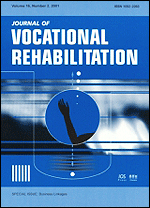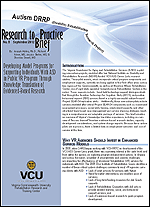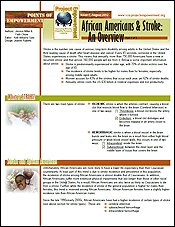Information, resources and research about work and disability issues
VCU Receives Federal Grant
 VCU Receives Federal Grant to Determine Best Practices to Facilitate Employment for Youth with Autism
VCU Receives Federal Grant to Determine Best Practices to Facilitate Employment for Youth with Autism
Virginia Commonwealth University, together with the Virginia Department for Aging and Rehabilitative Services and Henrico County Public Schools, has received a $2.5 million grant to expand research in how to best help youth with autism gain and maintain employment upon graduation. Young adults with autism are unemployed at a rate close to 90 percent, according to recent studies. Youth with autism present significant social and cognitive challenges, which have made competitive employment difficult after completion of high school.
The five-year grant, from the National Institute on Disability and Rehabilitation Research-United States Office of Special Education and Rehabilitative Services, will expand a current randomized controlled trial at a local hospital in Richmond, Va., where all students who participated in the project in the first three years were subsequently hired as employees by that hospital. The new grant will continue that research as well as fund research sites in two additional community hospitals in northern and southeastern Virginia. The VCU team is focused on employment issues and improving social and cognitive behavior of youth with autism. Read the News Release or listen to the NPR Interview of Dr. Paul Wehman about the Grant
Project Empowerment Webcast
 Virtue & Psychosocial Adaptability in Disability
Virtue & Psychosocial Adaptability in Disability
Date: 11/7/2012, 2:00pm ET
Presenter: Jeong Han Kim, Ph.D.
Jeong Han Kim, Ph.D., CRC is currently an assistant professor at the Department of Rehabilitation Counseling. He received his B.A. in psychology, and his M.S and Ph.D. in Rehabilitation Psychology at the University of Wisconsin-Madison. Dr. Kim has experience with several rehabilitation agencies, including state/federal VR, long-term health care, veterans hospital (compensated work therapy, mental health unit, AODA counseling unit), and independent living centers. His research and other scholarly activity includes publications through national and international journals, presentations, grantsmanship and editorial activities. His primary research interests focuses on virtues and character traits in the context of resilience, posttraumatic growth, well-being and vocational success. Register for this Webcast
KTER Archived Webcast
Getting to Work After a Traumatic Brain Injury Parts 1 & 2
Presenters: Nathan D. Zasler, MD & Patricia Goodall, EdS
If you missed this informative and timely webcast on TBI, be sure to catch the archive. In this webcast, Dr. Nathan Zasler and Dr. Patricia Goodall discussed research and strategies for returning to work following a traumatic brain injury (TBI). In Part 1, Dr. Zasler discussed TBI and what vocational specialists need to know. In Part 2, Dr. Goodall speaks about employment issues for people with traumatic brain injury.
Getting to Work After a Traumatic Brain Injury:
Part 1 Archive - What Vocational Specialists Need to Know
Part 2 Archive - Employment Issues
Research Study of the Month
 The Economics of Supported Employment: What New Data Tell Us
The Economics of Supported Employment: What New Data Tell Us
by Robert Cimera
This paper reviews the literature on the economics of supported employment. By comparing results from research conducted prior to, and after, 2000, several important findings were identified. The first was that individuals with disabilities fare better financially from working in the community than in sheltered workshops, regardless of their disability. This is especially true given that the relative wages earned by supported employees have increased 31.2% since the 1980s while the wages earned by sheltered employees have decreased 40.6% during the same period. Further, supported employment appears to be more cost-effective than sheltered workshops over the entire "employment cycle' and returns a net benefit to taxpayers. Read this JVR article
Autism DRRP
 Research to Practice Brief #5
Research to Practice Brief #5
Developing Model Programs for Supporting Individuals with ASD in Public VR Program through Knowledge Translation of Evidenced-Based Research
By: Joseph Ashley, Richard Kriner, Jessica Stehle & Sherrina Sewell
The Virginia Department for Aging and Rehabilitative Services (DARS) is piloting new autism projects, modeled after two National Institute on Disability and Rehabilitation Research (NIDRR) funded VCU ASD Career Links research studies. These pilot models, which incorporate critical program components and employment supports, currently are being applied in four field office areas across two regions of the Commonwealth, as well as at Woodrow Wilson Rehabilitation Center, one of eight state-operated Comprehensive Rehabilitation Centers in the nation. These supports include hand-held technology support strategies identified through the Assistive Technology for Cognition Study (ATCS), and positive behavioral support (PBS) services found in a highly successful autism focused Project SEARCH replication study. Read the Research to Practice Brief No. 5 (PDF)
Project Empowerment
 Points of Empowerment -
Points of Empowerment -
African Americans & Stroke: An Overview
Stroke is the number one cause of serious, long-term disability among adults in the United States and the
third leading cause of death after heart disease and cancer. Every 45 seconds, someone in the United
States experiences a stroke. This means that annually, more than 750,000 Americans have a new or
recurrent stroke and that almost 160,000 people will die from it.
Below is some important information about stroke:
- Stroke is predominantly experienced in older age, with 70% of stroke victims over the age of 65.
- The incidence of stroke tends to be higher for males than for females, especially among middle aged adults.
- Women account for 43% of the strokes that occur each year, yet 62% of stroke deaths.
- Annually, stroke costs the US $30 billion in medical expenses and lost productivity.
 Worksupport.com
Worksupport.com